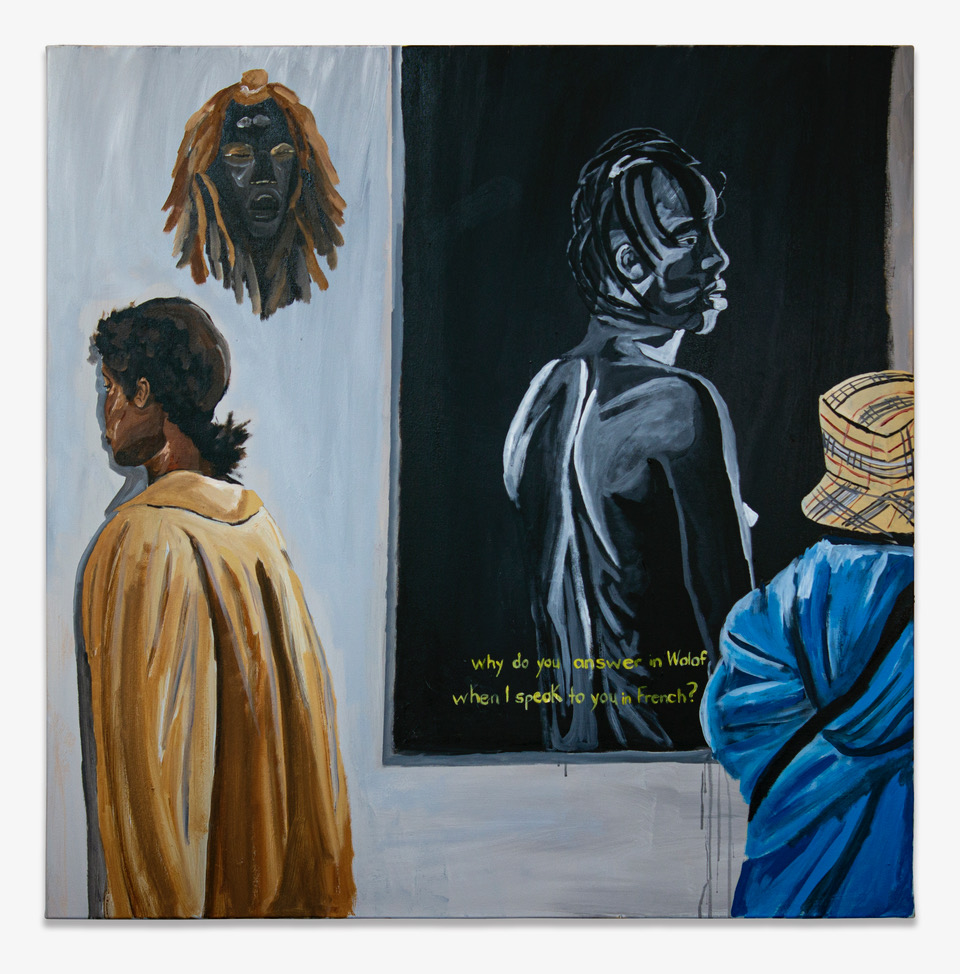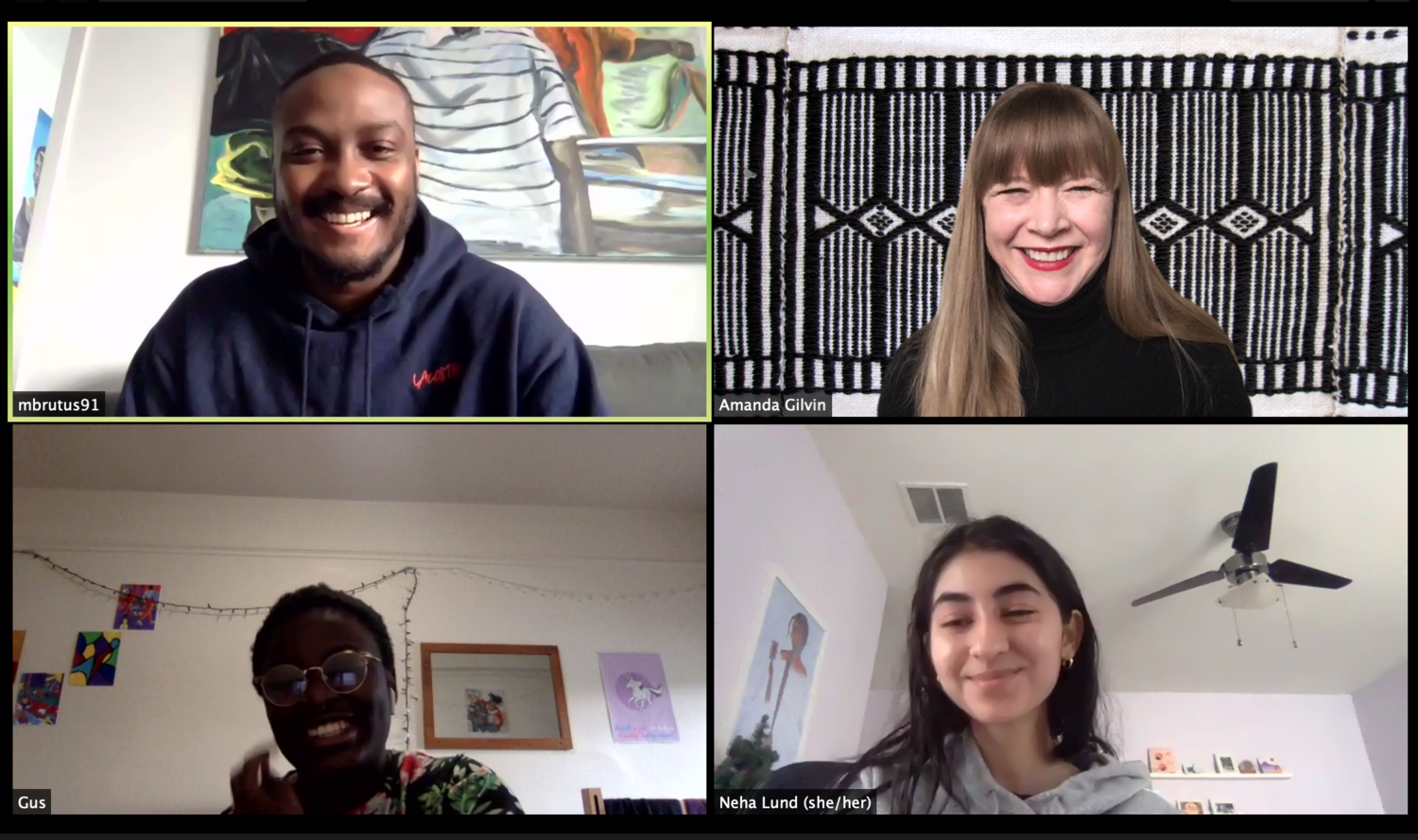Why Do You Answer in Wolof When I Speak to You In French?

Marcus Brutus, Why Do You Answer in Wolof When I Speak to You In French?, 2019, Acrylic on canvas, Museum purchase, The Dorothy Johnston Towne (Class of 1923) Fund 2020.8
In this painting purchased by the Davis Museum, New York-based artist Marcus Brutus presents an evocative scene layered with allusions to West African sculptures and films, global touristic scenes, documentary photographic approaches, and his own biography. Brutus cites Senegalese filmmaker Ousmane Sembene’s renowned film Xala as a primary inspiration for this artwork The artist finds themes about intergenerational experiences of language, modernity, and diaspora in Sembene’s films to resonate with—and inform—his own history as a Haitian-American.
Watching Xala on his laptop, Brutus found the dialogue between the main character and his daughter about language to be especially complex in the English subtitles for a conversation conducted in French and Wolof about those two languages: “Why do you answer in Wolof when I speak to you in French?” He painted the phrase over an image of a woman that he also found in the film.
In this imagined exhibition scene that also includes a Dan mask, Brutus creates a meditation on identity and diaspora: “I wanted to present how the perception of and attitudes towards different things changes from one generation to the next.” The themes of postcolonial intergenerational communication and the unusual arrangement of figures in the painting have already resulted in at least two term papers, and it will continue to expand Wellesley students’ perspectives for many years to come.

In December 2020, Gus Agyemang ’22, Neha Lund ’22, and Koerner Senior Curator Amanda Gilvin interviewed Marcus Brutus over Zoom. The students posed their questions as part of their research for Associate Professor Nikki Greene’s course, “African Art and the Diaspora: From Ancient Concepts to Postmodern Identities.”